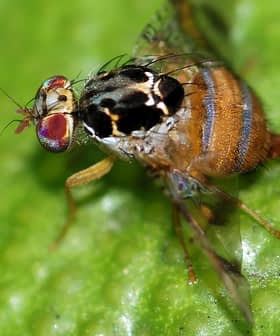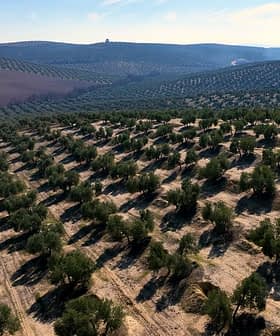Understanding Relationship Between Fungus and Climate May Curb Costly Olive Tree Pathogen, Researchers Say
A coordinated research effort in southern Spain has uncovered some of the main climatic drivers behind the spread of a prominent Verticillium wilt vector.
The new discovery may help Mediterranean olive farmers mitigate the impacts of the deadly plant pathogen, which is caused by the Verticillium dahliae fungus, in their orchards.
Since V. dahliae thrives in mild temperature conditions, rainy periods must coincide with warm ones in order to provide optimal conditions for the pathogen to thrive.
“It has already been proven that the spreading of Verticillium wilt in an olive orchard is the result of the interaction among the olive tree genotype, the density of its presence in the soil, the spreading mechanisms and other environmental factors, both biotic and abiotic,” researchers from the Andalusian Institute for Agricultural and Fisheries Research (IFAPA) said.
“While the effects of soil temperature and humidity are well known on a local scale, no previous study evaluated which climatic factors impact on its presence on a much larger scale,” they added.
See Also:Scientists in Spain Identify Olive Genes Resistant to Common PathogenThe study, which was published by the scientific journal Plos One, focuses on 779 olive groves in the province of Granada, which were selected and surveyed for the presence of the Verticillium dahliae.
Granada is home to 183,000 hectares of olive groves, which significantly vary in terms of management practices, olive cultivars and environmental factors.
The olive groves selected for the investigation, explained the researchers, cover 2,833 hectares of land with an average olive tree density of 139 olive trees per hectare.
“Forty models based on competing combinations of climatic variables were fitted and evaluated using information-theoretic methods,” the scientists wrote. “A model that included a multiplicative combination of seasonal and extreme climatic variables was found to be the most viable one.”
More specifically, the research team discovered how an environment undergoing minor temperature changes served as the perfect environment for the fungus. They also observed the role of the rainfall patterns in spreading the disease.
The scientists considered these two environmental variables as the most relevant ones influencing the infection.
“The isothermal effect was in turn modulated by the seasonality of rainfall, and this became less negative as seasonality increased,” the researchers wrote.
Additionally, in the olive-growing areas subjected to a lower temperature differential between day and night, the damaging fungi tended to be more present. The study also demonstrated that irrigation reduced the ability of the isothermal effect to influence the presence of the Verticillium dahliae.
See Also:Native Andalusian Olive Varieties Could Be Wiped Out by 2100, Researchers Warn“Since V. dahliae thrives in mild temperature conditions, rainy periods must coincide with warm ones in order to provide optimal conditions for the pathogen to thrive,” the researchers wrote.
“One important implication of our study is that appropriate irrigation management when temperature oscillation approaches optimal conditions for V. dahliae to thrive, may reduce the appearance of symptoms in olive trees,” they added.
The researchers believe that their findings will benefit all olive farmers and, most of all, Andalusian olive growers.
The southern autonomous community is not only the largest olive oil-producing region in the world – accounting for more than 1.3 million tons in the 2020/21 crop year – it is also among the worst affected by the Verticillium wilt. The plant pathogen is one of the main threats to many local high density and super-high-density olive groves.
According to the researchers, the results “demonstrate that long-term compound climatic factors rather than primary variables, such as annual trends, can better explain the spatial patterns of Verticillium dahliae occurrence in Mediterranean Spain.”









